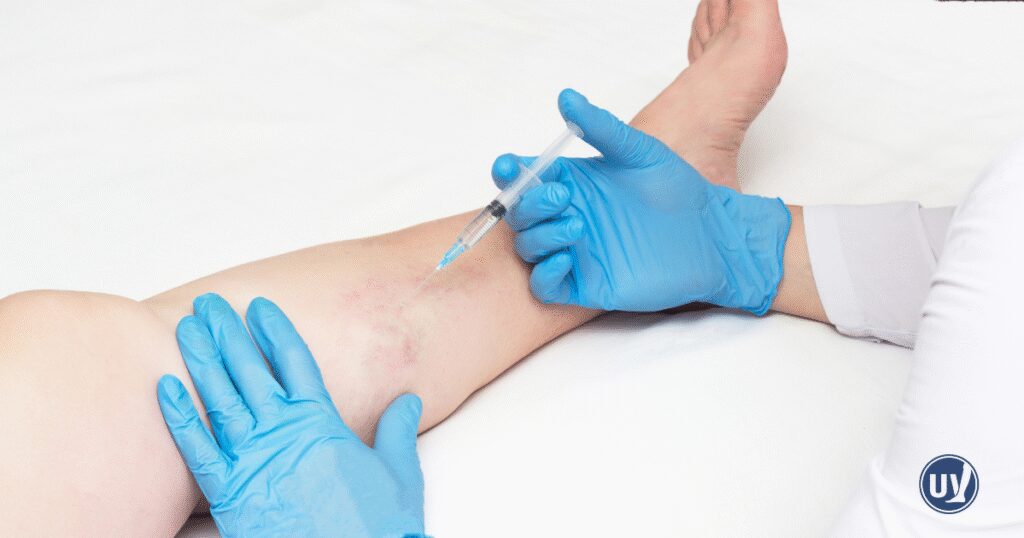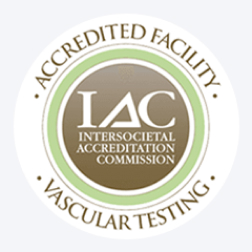Have you ever looked at your legs and noticed veins that seem to be green or bluish under your skin? You might have wondered whether this is normal, or if it’s a sign that something is wrong.
Many people notice these veins and it can feel a little strange at first. The good news is that in most cases, these veins are perfectly normal, but it’s also worth understanding when green veins could signal a more serious condition, like varicose veins.
In this guide, we’ll explore why some veins appear green, what factors affect how your veins look, and when it’s important to seek professional care. Whether you’re curious about your body or concerned about vein health, this article is designed to give you clear, approachable answers.
Why Do Veins Look Green?
First, it’s important to know that veins themselves are never actually green. The greenish color you see is an optical illusion caused by the way light interacts with your skin and the blood within your veins.
Here’s how it works:
- Light Reflection and Wavelengths: When light hits your skin, some colors penetrate more deeply than others. Red light is absorbed by your skin, while blue and green light are reflected back to your eyes. Depending on your skin tone, this reflected light can make your veins appear blue, green, or a mix of both.
- Skin Undertones and Thickness: People with fairer skin often have veins that are easier to see. The undertones of your skin—whether cool, warm, or neutral—can subtly change the color your veins appear.
- Blood Composition: Veins carry deoxygenated blood back to the heart, which is darker than oxygen-rich blood in arteries. The combination of darker blood and skin reflection contributes to the perception of green or bluish veins.
So next time you notice a green vein, remember that it’s usually a perfectly normal visual effect rather than a sign of illness.
When Green Veins Could Be a Sign of Varicose Veins
While most green veins are harmless, it’s important to pay attention to changes in size, shape, or discomfort. Veins that are visible, bulging, or twisted may be varicose veins.
Varicose veins occur when the valves in your veins become damaged or weakened. Healthy veins have valves that keep blood flowing upward toward your heart. When these valves fail, blood can pool in your lower legs, causing the veins to swell, twist, and become more noticeable.
Signs of varicose veins may include:
- Veins that appear green or bluish and bulge out of the skin
- Aching, heavy, or throbbing legs
- Swelling in the lower legs or ankles
- Itching or skin changes around the affected veins
Varicose veins are progressive, meaning they can worsen over time if left untreated. Fortunately, modern vein care offers minimally invasive treatments that can reduce symptoms and improve the appearance of your legs.
How Varicose Veins Affect Daily Life
You might think varicose veins are mostly cosmetic, but they can have a real impact on your daily life. Simple tasks like standing for long periods, walking, or exercising can become uncomfortable. Some people experience restless legs, fatigue, or cramping in the evenings. These symptoms can limit your mobility and affect your overall quality of life.
The first step toward relief is understanding your vein health and seeking care when needed. Ignoring symptoms won’t make them go away, but proactive treatment can restore comfort, confidence, and functionality.
Minimally Invasive Treatments for Varicose Veins
The good news is that today’s vein specialists offer effective, minimally invasive procedures that typically require little downtime. At United Vein & Vascular Centers, our board-certified specialists use state-of-the-art techniques to treat varicose veins, poor circulation, and other vascular conditions.

Some common treatments include:
- Sclerotherapy: Involves injecting a solution that collapses small varicose or spider veins, which are then naturally absorbed by the body.
- Radiofrequency Ablation: Uses heat to seal damaged veins and improve circulation.
Most of these procedures take just 20-30 minutes, are performed in-office, and require only minimal recovery time. Patients often report immediate relief from symptoms like swelling and aching.
Lifestyle Tips to Support Healthy Veins
Even after treatment, taking care of your veins at home can make a big difference. Simple lifestyle changes can improve circulation and prevent vein problems from worsening.
Helpful habits include:
- Regular Exercise: Walking, swimming, or cycling helps blood circulate efficiently and keeps veins healthy.
- Elevating Your Legs: Resting with your legs raised above heart level can reduce swelling and relieve pressure.
- Wearing Compression Garments: Compression stockings help blood flow properly and reduce discomfort.
- Maintaining a Healthy Weight: Extra weight can put added strain on your veins.
- Avoiding Prolonged Sitting or Standing: Move around frequently to keep blood flowing.
By combining professional treatment with these healthy habits, you can protect your vein health for years to come.
When to See a Vein Specialist
If you notice bulging, green or bluish veins, swelling, pain, or skin changes around your legs, it’s time to consult a vein specialist. Early intervention not only improves comfort but also prevents more serious complications, such as blood clots or chronic venous insufficiency.
At United Vein & Vascular Centers, our compassionate team takes the time to evaluate your veins, explain your condition, and create a treatment plan tailored to your needs. You don’t have to live with discomfort or uncertainty—help is available.
Take Charge of Your Vein Health Today
Visible green veins don’t always signal a problem, but if you experience bulging veins or discomfort, it’s worth getting checked. Understanding your vein health empowers you to take proactive steps, restore comfort, and improve your quality of life.
Schedule a consultation with United Vein & Vascular Centers today. Our board-certified specialists offer minimally invasive treatments that reduce symptoms, improve circulation, and help you feel confident in your legs again.
Frequently Asked Questions
In most cases, green veins are not dangerous. They are simply an optical effect caused by the way light reflects off your skin and veins. However, if the veins are bulging, painful, or accompanied by swelling, it’s important to seek medical evaluation.
Yes. Many varicose veins can be treated with minimally invasive procedures such as laser therapy, sclerotherapy, or radiofrequency ablation. These treatments are safe, effective, and require little downtime.
Maintaining healthy veins involves regular exercise, avoiding prolonged sitting or standing, elevating your legs, wearing compression stockings if needed, and keeping a healthy weight. Early evaluation by a vein specialist can also help prevent progression.


